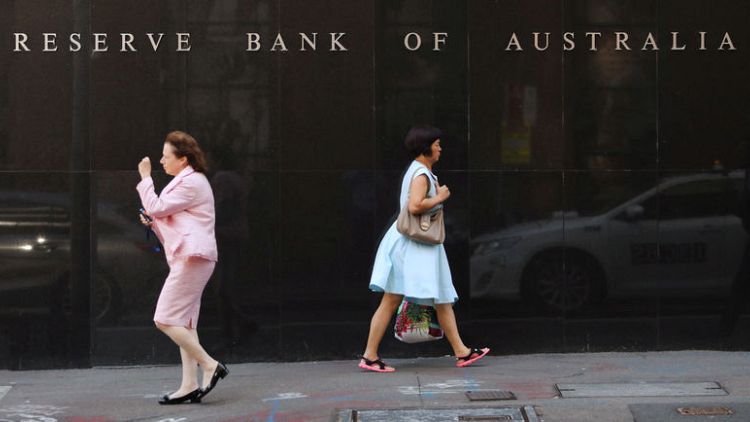By Swati Pandey
SYDNEY (Reuters) - Calls for Australia's central bank to cut interest rates as early as next month increased significantly on Wednesday, a Reuters poll showed, as first-quarter inflation data was disappointingly weak.
The Reserve Bank of Australia (RBA) has left policy at a record low 1.50 percent since last easing in August 2016. But this record spell of unchanged rates is likely to break with 12 of 23 economists now predicting a cut on May 7.
A raft of banks from ANZ to ING, JPMorgan and Citi are among those forecasting a May easing.
That is a sharp turnaround from the previous poll in March when the median view of 45 economists was for stable rates until early 2021.
The median view of 23 economists is now for 1.00 percent over that horizon.
Expectations changed rapidly after official data on Wednesday showed consumer price inflation inflation slowed sharply last quarter to the lowest in three years.
Key measures of underlying inflation favoured by the Reserve Bank of Australia (RBA) averaged 1.4 percent for the year, again missing forecasts and marking 13 quarters below the central bank's target range of 2 to 3 percent.
"The downward surprise to core inflation in Q1 leaves the RBA with little choice but to cut the cash rate by 25 basis point at its May meeting," ANZ economists said in a note on Wednesday.
"We have doubts that modest rate cuts will do much to push inflation sustainably higher, but it's hard to see that the RBA has much choice but to use the tool at its disposal, ie a lower cash rate."
The change in the outlook accompanies disappointing fourth-quarter gross domestic product data for March quarter while retail sales - a gauge of consumer health - have also remained tepid for some time now.
The RBA shifted away from its long-held tightening bias earlier this year to put rate cuts on the table citing a slowing local economy and broader global risks such as the ongoing Sino-U.S. trade war and rise of populism.
Minutes of the RBA's April policy meeting showed it now believes a cut would be "appropriate" should inflation stay low and unemployment trend higher.
(Reporting by Swati Pandey; Editing by Kim Coghill)



